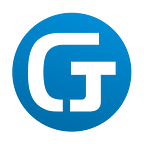Remote Patient Monitoring Software Development: A Breakthrough in Healthcare
Introduction
In the fast-evolving landscape of healthcare, remote patient monitoring software development has emerged as a game-changer. This technology is redefining how patients receive care, providing a bridge between healthcare providers and patients, and improving the overall quality of care. In this article, we will delve into the world of remote patient monitoring software development, highlighting its significance, benefits, and addressing key questions about this transformative field.
Understanding Remote Patient Monitoring Software Development
Remote patient monitoring software development refers to the process of creating applications and systems that allow healthcare providers to remotely track and monitor the health of patients. These systems use a variety of devices such as wearable sensors, smartphones, and tablets to collect and transmit health data, making it easier for physicians to make informed decisions and provide timely care.
The Role of Technology
Advancements in technology have paved the way for remote patient monitoring software development to flourish. With the integration of IoT (Internet of Things) devices, data analytics, and artificial intelligence, healthcare providers can now offer more personalized and efficient care. Patients, on the other hand, benefit from real-time health data tracking, reducing the need for frequent in-person visits.
Benefits of Remote Patient Monitoring Software
- Enhanced Patient Care: Patients can receive continuous care and monitoring, even from the comfort of their homes.
- Early Detection: The software can detect health issues early, leading to quicker interventions and better outcomes.
- Reduced Healthcare Costs: Fewer hospital admissions and emergency room visits translate to cost savings for both patients and healthcare systems.
- Improved Patient Engagement: Patients are more involved in their own care, leading to better compliance with treatment plans.
- Elderly Care: Remote monitoring is especially valuable for the elderly, allowing them to age in place with appropriate support.
Overcoming Challenges
While remote patient monitoring software development offers tremendous benefits, it is not without its challenges. Security and data privacy are paramount concerns, as the transmission of sensitive health data must be secure. Additionally, interoperability and integration with existing healthcare systems can be complex but are essential for seamless care delivery.
FAQs
Q: Is remote patient monitoring software development only for chronic conditions?
A: No, while it’s extremely beneficial for chronic conditions, it can also be used for post-operative care, medication management, and general health monitoring.
Q: How secure is the data collected through these systems?
A: Data security is a top priority. These systems employ encryption and comply with healthcare data regulations to ensure patient information remains confidential.
Q: Can patients with limited technical skills use remote monitoring systems?
A: Yes, many systems are designed to be user-friendly, and healthcare providers offer support and training to patients.
Q: Is remote patient monitoring software development cost-effective for healthcare providers?
A: Initially, there are setup costs, but over time, the savings from reduced hospital admissions and better resource allocation make it cost-effective.
Q: Can these systems integrate with electronic health records (EHRs)?
A: Yes, many systems are designed to seamlessly integrate with EHRs, allowing healthcare providers to access all patient data in one place.
Q: Are these systems covered by insurance?
A: Coverage varies, but as the technology proves its effectiveness, insurance companies are increasingly covering remote patient monitoring services.
Conclusion
Remote patient monitoring software development is reshaping the healthcare landscape, offering a bridge between patients and healthcare providers that ensures continuous care and better health outcomes. While there are challenges to overcome, the benefits of this technology are undeniable. As we embrace the digital age, remote patient monitoring software development represents a beacon of hope in healthcare, promising a healthier and more connected future.
